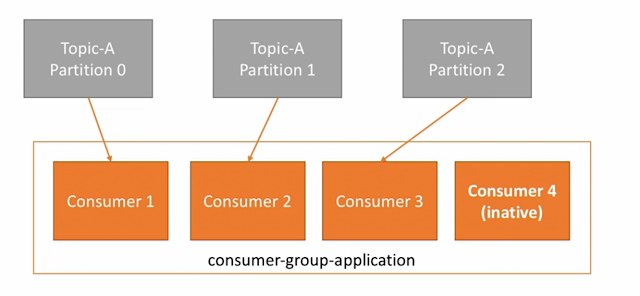- If you have more consumers than partitions, som consumers will be inactive
2024년 6월 21일 금요일
Consumer Groups
- Consumers read data in consumer groups
- Each consumer within a group reads from exclusive partitions
- If you have more consumers than partitions, some consumers will be inactive
- Note: Consumers will automatically use a GroupCoordinator and a ConsumerCoordinator to assign a consumers to a partitionProducers: Message keys
- Producers can choose to send a key with the message (string, number, etc..)
- If key = null, data is sent reound robin (broker 101 then 102 then 103...)
- If a key is sent, then all messages for that key will always go to the same partition
- A key is basically sent if you need message ordering for a specific field(ex:truck_id)
(Advanced: we get this guarantee thanks to key hashing, which depends on the number of partitions)Producers
- Producers write data to topics(which is made of partitions)
- Producers automatically know to which broker and partition to write to
- In case of Broker failures, Producers will automatically recover
- Producers can choose to receive achnowledgment of data writes:
- acks=0: Producer won't wait for acknowledgment(possible data loss)
- acks=1: Producer will wait for leader acknowledgment(limited data loss)
- acks=all: Leader + replicas acknowledgment (no data loss)
Concept of Leader for a Partition
- At an time onlyu ONE broker can be a leader for a given partition
- Only that leader can receive and serve data for a partition
- The other brokers will synchronize tghe data
- Therefore each partition has one leader and multiple ISR(in-sync replica)
Topic replication factor
- Topics should have a replication factor > 1 (usually between 2 and 3)
- This way if a broker is down, another broker can seve the data
- Example: Topic-A with 2 partitions and replication factor of 2
- Example: we lost Broker 102
- Result: Broker 101 and 103 can still serve the data







